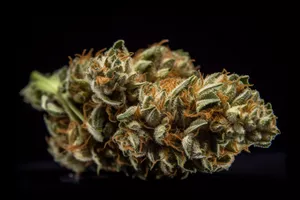
Afghan Kush Cannabis Strain
Your Cannabis AI assistant
*By signing up, you agree to the Terms and Conditions and Privacy Policy. California residents, see our CA Privacy Notice.
Unlock the full potential of Afghan Kush Cannabis Strain
What effects can I expect from Afghan Kush?
What does Afghan Kush taste like?
What are the medicinal benefits of Afghan Kush?
What are the THC, CBD, and CBN levels in Afghan Kush?
Afghan Kush Grow Information
Afghan Kush is classified as an easy-to-grow strain, making it a popular choice among novice growers. It can thrive both indoors and outdoors, producing high yields of resin-filled buds. The strain is hardy, able to withstand varying conditions and resist common diseases that affect cannabis plants. When grown under optimal conditions, Afghan Kush plants can produce high counts of hashish.
A Journey into the Diverse World of Strains
Types of Cannabis Strains:
Cannabis strains are generally classified into three main types, each with distinct characteristics and effects:
- Indica: Known for their relaxing and calming effects, Indica strains are often favored for evening use, stress relief, and relaxation. They are typically associated with a "body high" and may promote physical relaxation and sleep.
- Sativa: Sativa strains are known for their uplifting and energizing effects, making them popular for daytime activities, creative pursuits, and socializing. They tend to produce a more cerebral or "head high" and may stimulate creativity and focus.
- Hybrid: Hybrid strains are a combination of Indica and Sativa genetics and offer a balance of effects. They are available in various ratios (e.g., Indica-dominant, Sativa-dominant, or balanced) and may exhibit characteristics of both parent strains.
Cannabinoids and Terpenes:
Cannabis plants contain a variety of chemical compounds called cannabinoids and terpenes that contribute to the strain's effects, flavors, and aromas:
- Cannabinoids: The most well-known cannabinoids are THC (tetrahydrocannabinol) and CBD (cannabidiol). THC is responsible for the psychoactive effects of cannabis, while CBD is non-intoxicating and may have therapeutic properties. The ratio of THC to CBD in a strain can influence its overall effects.
- Terpenes: Terpenes are aromatic compounds found in cannabis and other plants. They give each strain its unique scent and flavor profile (e.g., citrusy, earthy, fruity) and may also influence the strain's effects.
Choosing the Right Strain:
Selecting the right cannabis strain depends on individual preferences and desired effects. Consider the following factors when choosing a strain:
- Desired Effects: Consider the type of experience you're seeking, whether it's relaxation, pain relief, creativity, or socializing.
- Tolerance: If you're new to cannabis or have a lower tolerance, consider strains with lower THC levels or strains with a balanced THC-to-CBD ratio.
- Medical Conditions: If you're using cannabis for medical purposes, specific strains may be more suitable for addressing particular symptoms or conditions.
Responsible Consumption:
Cannabis affects everyone differently, so it's important to consume responsibly and start with a low dose, gradually increasing as needed to find your ideal experience. Be mindful of the method of consumption (e.g., smoking, vaping, edibles) as it can impact the onset and duration of effects.
Legal Considerations:
Familiarize yourself with local cannabis laws and regulations regarding marijuana use, possession, and purchase. Laws vary by location, and it's important to ensure compliance.
Remember, the information provided in this section is intended to serve as a general guide. Consult with a cannabis healthcare professional for specific medical concerns, and always verify the legality of cannabis in your location.











